Length: 7" / 175mm
Weight: 1-3/4 oz / 50g
Type: Topwater
Hooks: Owner ST-66 #1/0
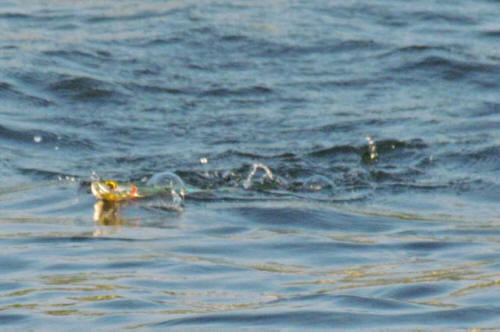
The Big Stik represents a big meal frantically flailing on the surface.
The Big Stik is a technically-advanced model of lure called a pencil popper that has a long history for saltwater surf fishing on the beaches of the Northeast Atlantic coast. Stan Gibbs of Massachusetts is one of several historical striper surf lure designers and his Gibbs Pencil Popper is legendary along the striper coast. Yet there are many other lure makers, local and regional within the northeast that produce saltwater pencil poppers. Most of those are made of wood – and that’s where the ima Big Stik comes into its own because it is a hard plastic lure, precision injection-molded, balanced and weighted in ways not possible with wood, including non-rattling and rattling versions. Another key difference is the Big Stik is made for freshwater bass.
The Big Stik is heavily tail-weighted and ballistic. You can launch one further than most any other topwater used for freshwater bass, whether largemouth, smallmouth or spotted. It’s also ideal for freshwater stripers in rivers and large impoundments of the Southeast, Texas, the California Delta, Colorado River system or anywhere stripers are found in freshwater across the USA.
In situations where you need to cast far, quickly to surface-feeding fish, the Big Stik simply has no equal among freshwater topwater lures.
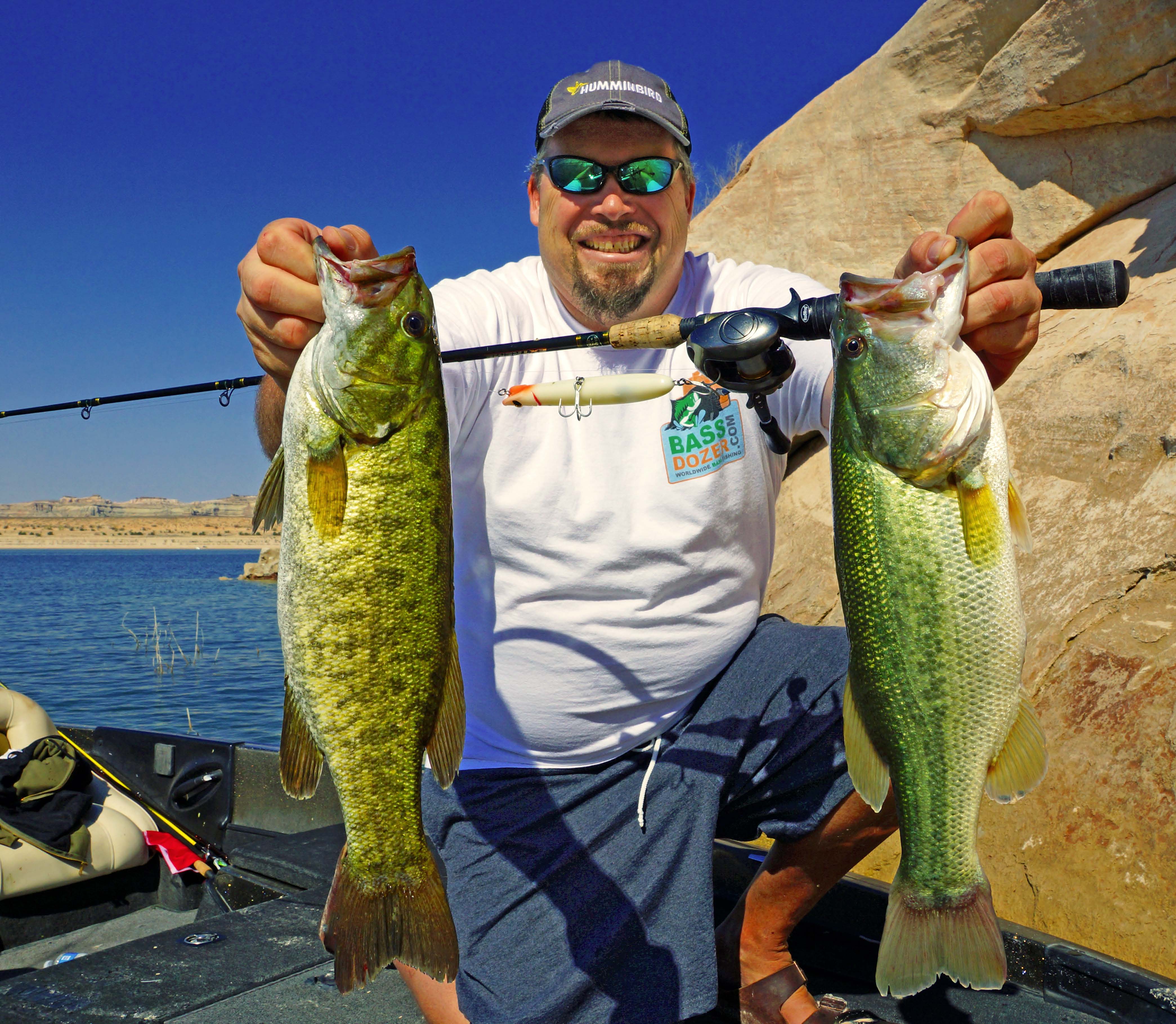
Bill Bjork with nice catches popped up on the ima Big Stik
It’s fair to say the ima Big Stik is a specialty plug for suckering big bass, and in that regard, it will work most any time trophy bass are hungry. Ideally, best conditions for the Big Stik are when big pelagic baits like blueback herring or gizzard shad are in the vicinity. Bass fond of feeding on stocked rainbow trout are ideal to target with the Big Stik too. Nevertheless, even in the absence of such larger baitfish stocks, the Big Stik will still trigger something very primordial in the more aggressive and larger-than-average bass in any given fishery at any time. Bigger bass are used to feeding opportunistically on bigger forage of whatever preyfish species they can catch, and there are many of those, including suckers, hitch, crappie, you name it. The Big Stik simply represents a big meal frantically flailing on the surface.
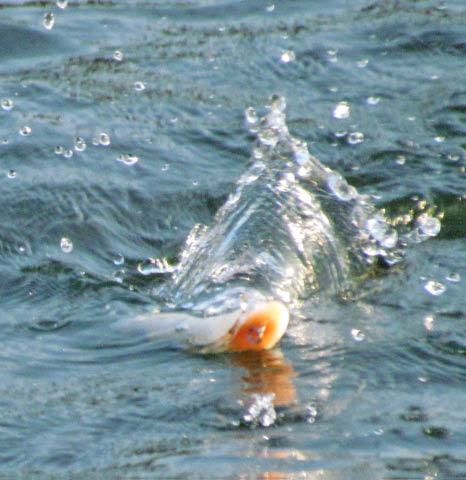
The specially-designed, brimmed mouth is something that can only be injection-molded in hard plastic, never in wood.
You will know you are working the Big Stik correctly when the head of the lure is slapping back and forth on the surface so fast that it is difficult to even see the lure for all the splashing it creates. It is as if the lure is basically a firecracker that just can't stop exploding on the surface! All the time you are violently whipping the rod while turning the reel handle. This creates a frenzy of surface activity that no other topwater possibly can!
The results can be huge bass that become extremely excited and enraged by the Big Stik. Apparently, the surface-whipping frenzy of the lure does not allow a big bass to clearly see what is causing the commotion. Often you will just see a big head, back and broad tail suddenly emerge from the water behind your Big Stik - and viciously lunge at your lure and begin creaming it time and again, not stopping until the fish nails it. Just don’t stop whipping the rod tip and reeling. Keep up the action until the fish literally hooks itself. Chances are, if you stop or break the cadence, or if you jerk the lure too far away by trying to set the hook prematurely, the bass will depart quickly.
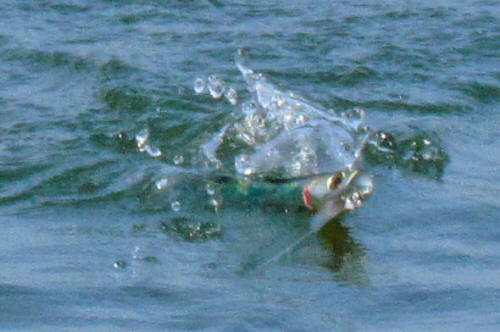

Bill Bjork with nice catches popped up on the ima Big Stik
More Tips from ima Pro-Staffer Michael Murphyima pro-staffer Michael Murphy favors using the Big Stik on heavy tackle. A Denali 7’6” heavy flipping stick with 20 lb test allows Murphy to put everything he’s got into a cast, practically emptying his spool to reach distant breaking bass. Michael will routinely toss the Big Stik first whenever he first pulls up to a spot, making 2 or 3 casts with the Big Stik first to draw the big fish up before they become fully aware of his presence. If no takers after a few casts, the next trick Michael makes is to switch to a second rod with a more typical-sized topwater, the ima Skimmer. Murphy finds that fish he activated or aroused with the Big Stik but didn’t strike it, those fish will often prove willing to hit the ima Skimmer better thanks to those first few “wake up calls” made through the area with the Big Stik. Murphy gets bass looking up, thinking about feeding with the Big Stik first, and then closes the deal with the Skimmer. Under ordinary conditions (little or no wind or surface chop), Murphy uses rod action to work the Big Stik so it slaps its head side to side on the surface. For the first half of a cast, due to the long distance, it’s necessary to work the rod tip while holding it high, approximately from 10 to 11 o’clock. Once the Big Stik gets closer, Murphy works the lure the rest of the way with the rod tip held down near the water’s surface. When the water’s choppy or rough, however, Murphy finds that the turbulent surface itself can pack enough power to slap the perfectly-balanced Big Stik from side-to-side with little or no rod action required. Such conditions are also when Murphy makes sure he’s using the rattling Big Stik model, as the noise and the rolling beads inside work in concert with the choppy surface, generating a natural, rhythmic cadence in tune with the environment. One last tip is that Michael feels the Mylar-tied flash tail of the Big Stik results in more strikes. So if you ever need to replace the tail treble, Murphy recommends using a flashy or feather-dressed treble on the Big Stik. |
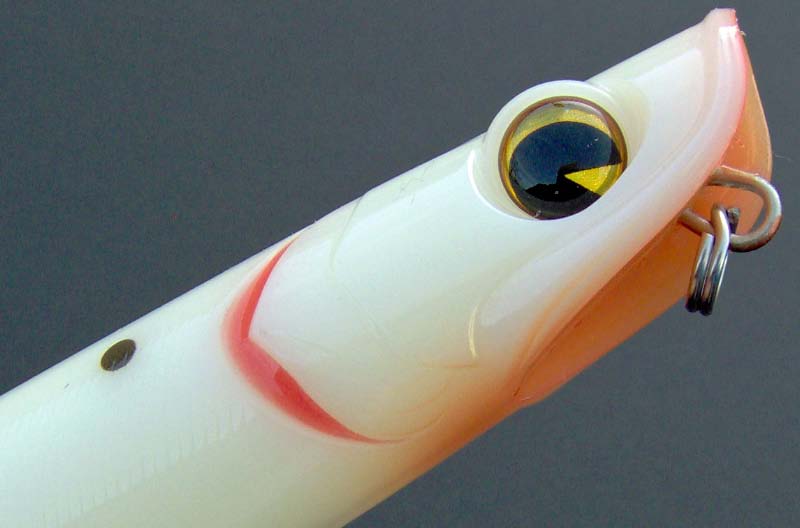
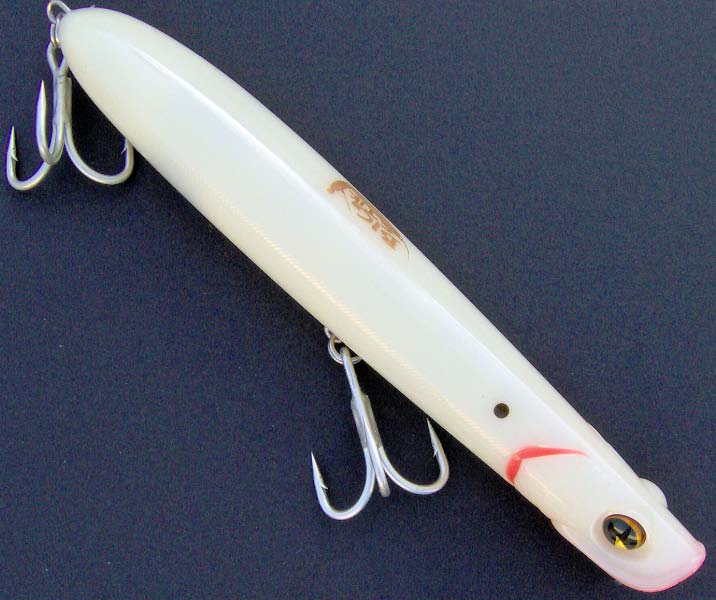

ima Big Stik ~ Pencil Popper ~ Silent ~ Bone
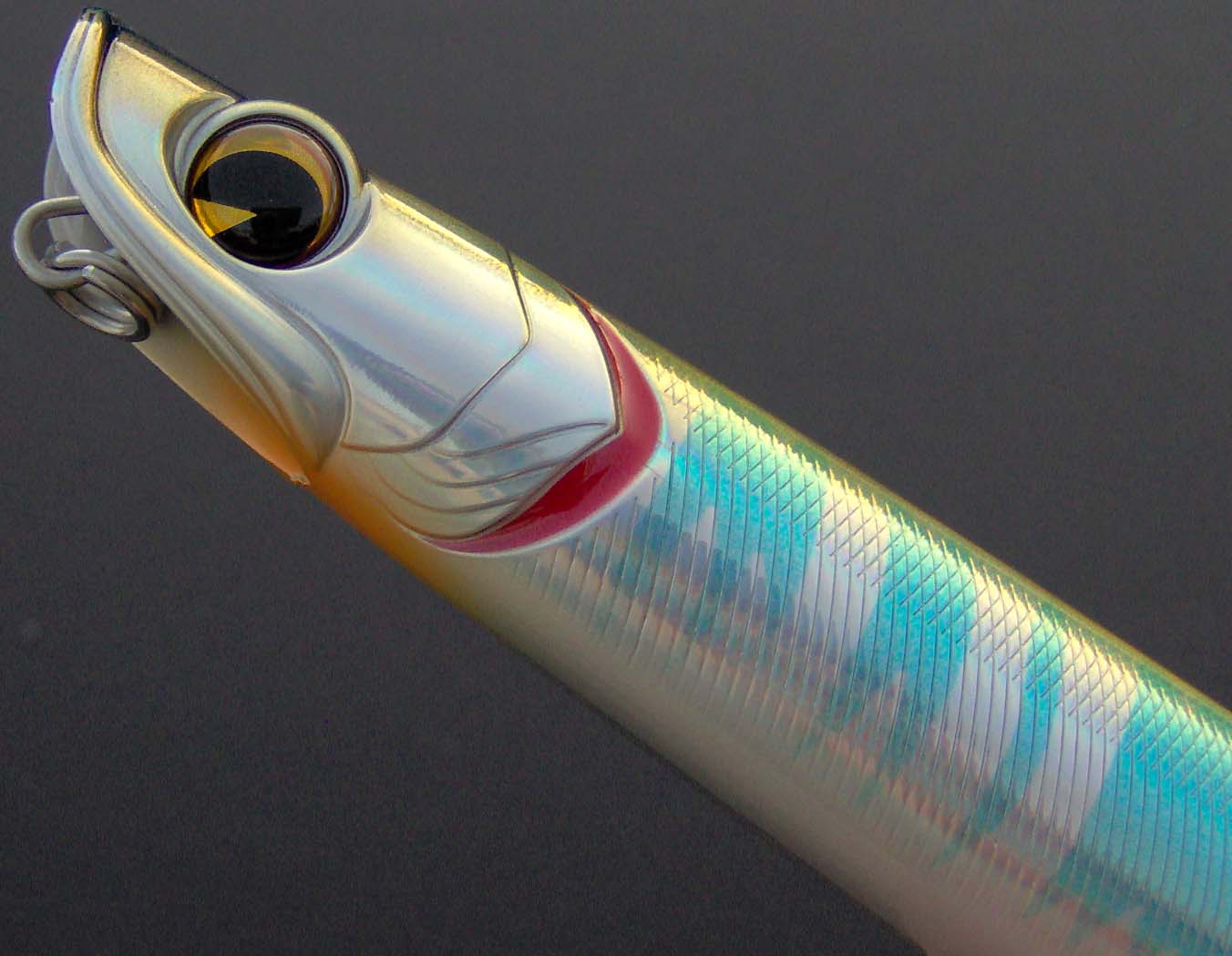
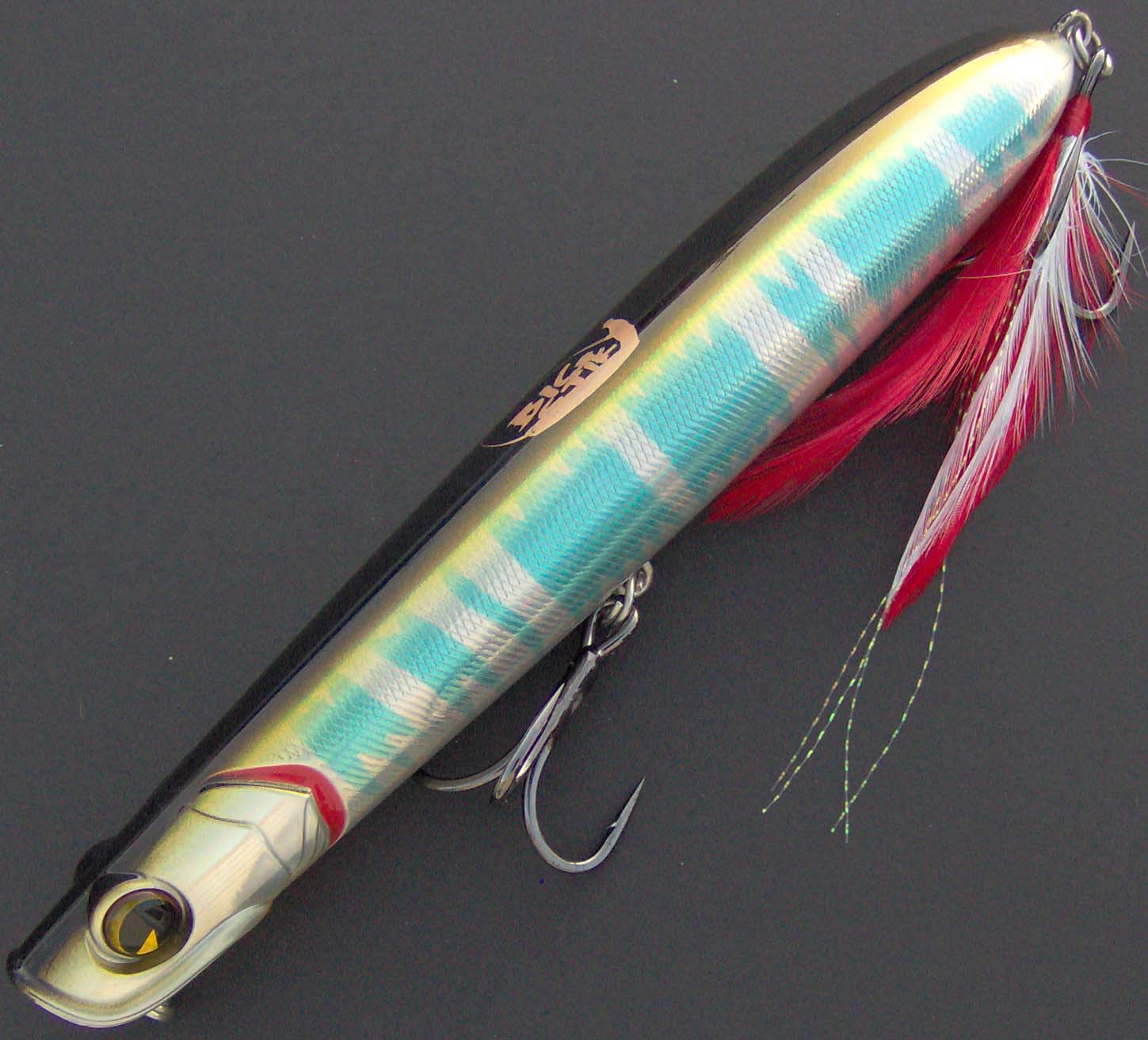

ima Big Stik ~ Pencil Popper ~ Rattling ~ Misty Shad
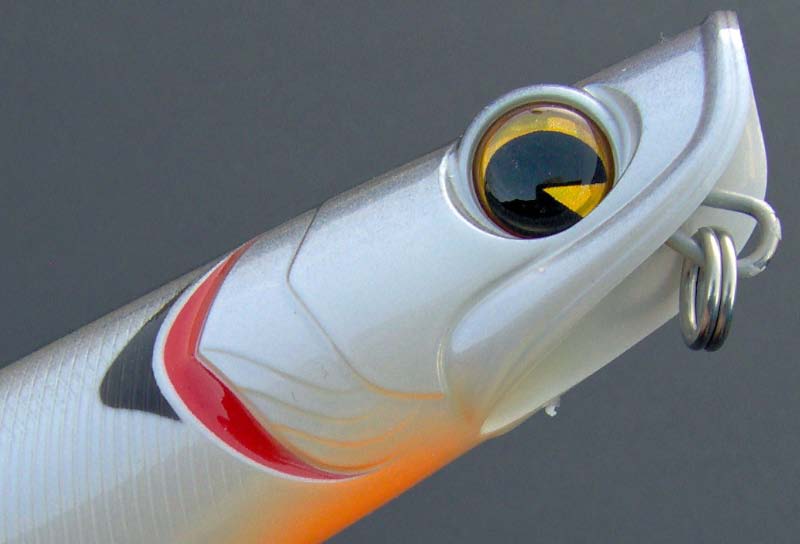
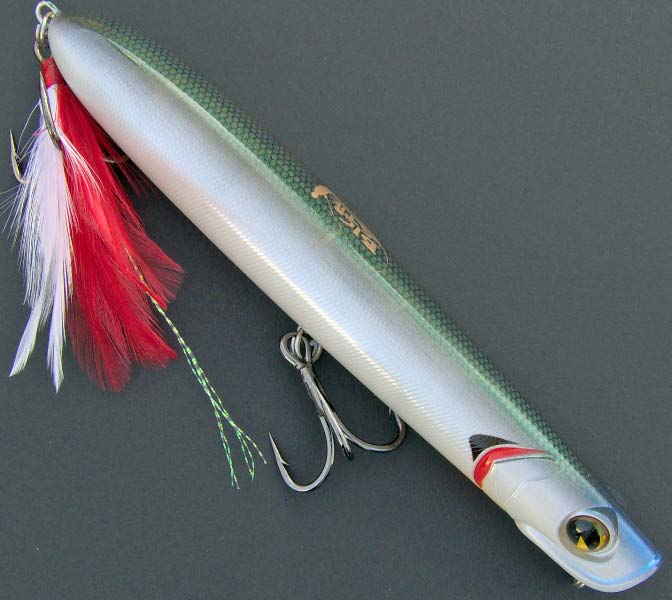

ima Big Stik ~ Pencil Popper ~ Rattling ~ Tennessee Shad
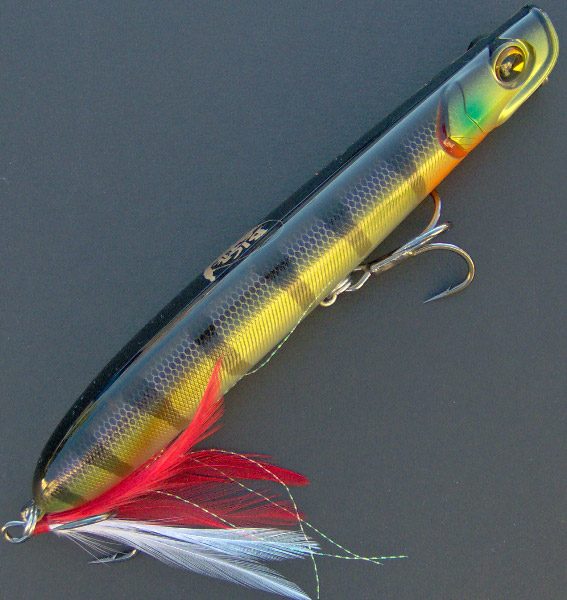

ima Big Stik ~ Pencil Popper ~ Rattling ~ Bluegill
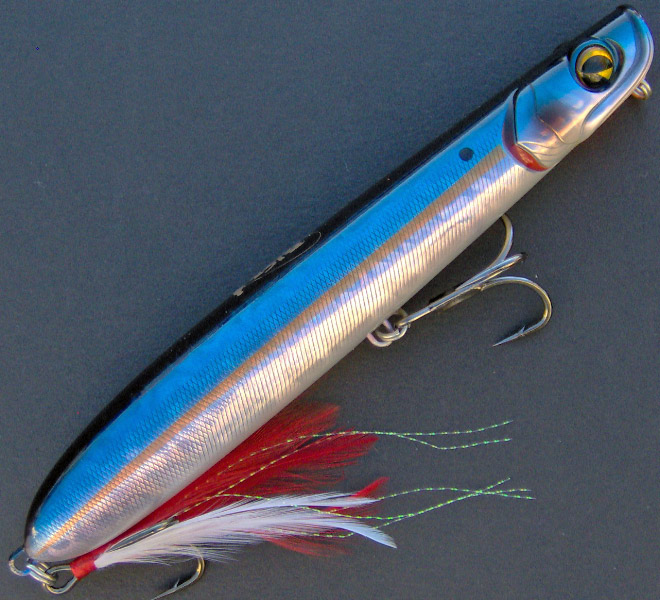

ima Big Stik ~ Pencil Popper ~ Rattling ~ American Shad
|

